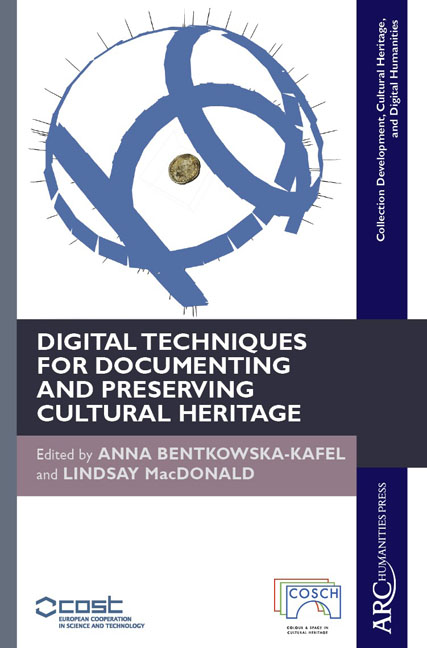X-ray Fluorescence (XRF) Spectrometry
Published online by Cambridge University Press: 26 January 2021
Summary
COSCH Case Studies that have employed this technology: Roman coins, Germolles
Definition
XRF spectrometry is a non-destructive analytical technique widely used to determine the elemental composition of materials. It has been demonstrated to be effective in fields including biology, medicine, geology, material science, environmental studies, and cultural heritage, among many others. The suitability of this technique for conducting elemental surveys that require no extraction of samples makes it very versatile in cultural heritage research.
Description
X-ray fluorescence is induced when photons with enough energy, emitted from an X-ray source, interact with a material. High-energy photons induce ionization of inner shell electrons through the photoelectric effect, creating electron vacancies in these shells. These vacancies are almost immediately filled with electrons from outer shells resulting in emission of fluorescent radiation, which is characteristic for each element. The lines observed in the XRF spectrum enable identification of the chemical elements present. XRF analysis is therefore a powerful analytical tool for the spectrochemical characterization of most elements present in an object.
An XRF spectrometer contains several components including: an excitation source or X-ray tube, a sample chamber or open shutter system to deliver X-rays to the sample, a detector to determine the characteristic X-rays generated, an analyser that converts the measured energies to their correspondent electronic transitions, and a display device to visualize the measured spectra. Early XRF instruments contained a sample chamber, typically of limited size, that allowed only for the measurement of samples extracted from cultural heritage objects. In response to the needs of heritage scientists, modern instruments employ open beam systems that allow simultaneous X-ray irradiation and detection of fluorescence emitted by actual historic objects of all sizes without requiring sampling. The detector is composed of two charged electrodes that have a non-conducting or semi-conducting material positioned between them. The X-rays ionize these materials causing them to become conductive. The unbound electrons are accelerated toward the detector anode to generate a signal that can be measured. Based on the detector used, X-ray techniques can be divided into energy (EDXRF) and wavelength dispersive (WDXRF).
Two types of analysis are possible in XRF. Qualitative analysis allows identification of the elements present in the object, and has been used on paper artworks, paintings, and ceramics. Quantitative analysis involves the determination of the relative amount of each element present in an object.
- Type
- Chapter
- Information
- Publisher: Amsterdam University PressPrint publication year: 2018



